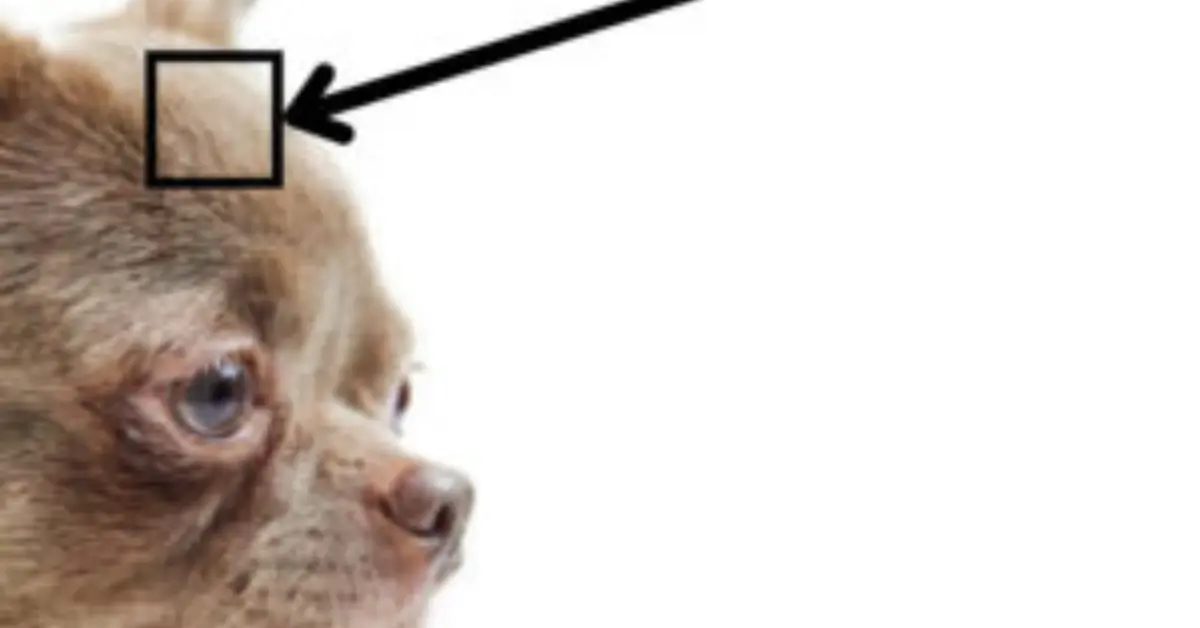Do the soft spots on your Chihuahua’s head worry you? Moleras are the name for these soft spots in the head that are common in some dog breeds, like Chihuahuas. But if the spot gets bigger or changes over time, it could be a sign that your Chihuahua’s health is getting worse. In this blog post, we’ll talk about Molera in chihuahuas in general and show you how to figure out how bad it is.
The Definition Of Molera In Chihuahuas
Chihuahuas have a natural opening in their heads called a Molera. This is because their parietal and frontal bones haven’t fully fused together.
A Chihuahua puppy’s head has an opening a few inches above its nose and in the center of its top. The Molera is usually round or diamond-shaped and about the size of a dime. Its width can be anywhere from 1/4 inch to 1 inch, and its edges can be smooth, rough, or jagged. As the puppy grows, cartilage helps fuse the skeletal plates together. This leads to a hardened head.
Advertisement
Not just Chihuahuas are born with heads that are not fully formed. Molera is a term that only applies to Chihuahuas, but this is a trait that many mammals have. Even human babies are born with it. Fontanelle is the name for the hole in a baby’s head.
Most of the time, gaps in the skull bones heal on their own. But the Molera may stay open for Chihuahuas and other small dog breeds. If this is the case, precautions should be taken to keep your dog from getting hurt. Keep an eye out for this condition for as long as your Chihuahua lives.
The Cause Of Molera In Chihuahuas
Chihuahuas have Moleras, which help them give birth, just like babies do with their fontanelles. Because the breed has a small waist and a big head, it can be hard for female Chihuahuas to give birth. The Molera, on the other hand, makes it easy for the puppy’s head to bend and move through the birth canal.
Is Molera In Chihuahuas Harmful?
People used to think that Chihuahuas with a Molera were more likely to get hydrocephalus, a serious disease in which fluid builds up in the ventricles of the brain instead of draining. This can cause swelling in the brain, which can lead to brain damage, seizures, coma, or even death.
In his “Diseases of the Brain” study from 1989, Greene Braund found that there was no link between Moleras and hydrocephalus in small dogs like Chihuahuas. Researchers came to the conclusion that having a Molera does not increase the chance of getting hydrocephalus.
Some parents and experts don’t agree with these statements. Even though many Chihuahuas with hydrocephalus have a Molera, Chihuahuas often have this cranial hole, and not all of them with a Molera have hydrocephalus. We would need to do more research to find out if Moleras are a cause of hydrocephalus.
Even though a Molera in your Chihuahua might make them more likely to get hydrocephalus or other diseases, it’s still important to protect their head from harm. Their skull isn’t fully formed yet, so a blow to the head could hurt their brain. Keep these tips in mind until the Molera closes so that this doesn’t happen.
How To Know If My Chihuahua Suffers From Molera?
Without help from a vet, it can be hard to tell if a Chihuahua has a Molera. But you can feel your Chihuahua’s head to see if it has it. A doctor can take an X-ray to measure the size of the hole for a more accurate assessment.
Follow these steps to see if your Chihuahua has a Molera on your own:
- Ask your Chihuahua to sit on your lap.
- To find the “stop” on your Chihuahua, just put your middle finger between its eyes and nose.
- Gently pet your Chihuahua’s head with your index finger.
- If your Chihuahua has a Molera, you’ll see a hole or hollow where the brain hasn’t fully formed.
- It’s important to know where the Molera is because it needs to be protected from any blows.
Is This Condition Common In All Chihuahuas?
Moleras are common in Chihuahuas, and about 80% of all newborn puppies get them. The disease is so common that it is written into the breed standards for Chihuahuas by the most important dog groups in the world.
In the early days of the Chihuahua breed, soft spots (Moleras) were a common way to keep the dog’s weight between 2 and 4 pounds. Due to the preference for smaller Chihuahuas, this led to more Moleras, and this choice lasted until the mid-1970s.
Because of the size of their heads, teacup and apple-head Chihuahuas are more likely to get and keep a Molera than deer-head Chihuahuas.
How Canine Organizations See This Condition In Chihuahuas?
In 1923, the American Kennel Club (AKC) made rules for Chihuahuas, one of which was that they had to have a hole in their head called a Molera. Without this trait, Chihuahuas couldn’t compete and win awards for appearance. But the AKC changed its rules later and no longer needs this physical trait.
Find out what the most important dog groups in the world say about the Chihuahua’s Molera in their breed standards:
- The American Kennel Club (AKC) says that Chihuahuas should have a head in the shape of an apple, with or without a soft spot.
- The United Kennel Club (UKC) won’t let Chihuahuas compete if they have an open fontanel, also called a “Molero” or “hole in the middle of the skull.”
- The Canadian Kennel Club (CKC) wants a dog’s head to be in the shape of an apple, with or without a soft spot.
- The Fédération Cynologique Internationale (FCI) says that a well-rounded apple head is a good trait for a chihuahua dog breed. But Chihuahuas with an open fontanel aren’t allowed to enter the show.
AKC and CKC Chihuahua breed standards do not put the Molera at the top of the list for grooming shows. So, Chihuahuas can fight whether or not they have this spot. The UKC and FCI, on the other hand, think that Moleras is a mistake. So, Chihuahuas who have Moleras aren’t allowed to compete in these events.
Last Word
As said earlier Moleras are on Chihuahuas for the same reason that fontanelles are on babies: It helps the baby’s head move through the birth canal more easily.
Because Chihuahuas have a big head and a small waist, it can be hard for them to give birth. The Molera, on the other hand, helps by briefly bending the pup’s head so it can fit through the birth canal.
You can’t know when or even if the Molera for your Chihuahua will close. Statistics show that about half of all Chihuahuas born with this trait have Moleras that close all the way.
Usually, as a puppy grows up, his head slowly joins together. But it could take anywhere from three months to three years, or even never, for the Molera to fully close. If a Chihuahua’s Molera doesn’t close all the way, it will probably get smaller as cartilage pulls the parietal and frontal skeletal plates together.
YOU MAY ALSO LIKE:
Glaucoma in Chihuahuas: Treatment, And Prevention
Heart Murmur in Chihuahuas: Treatment, And How to Prevent it?
Apple-Head Chihuahua: A Breed Complete Guide
Advertisement














